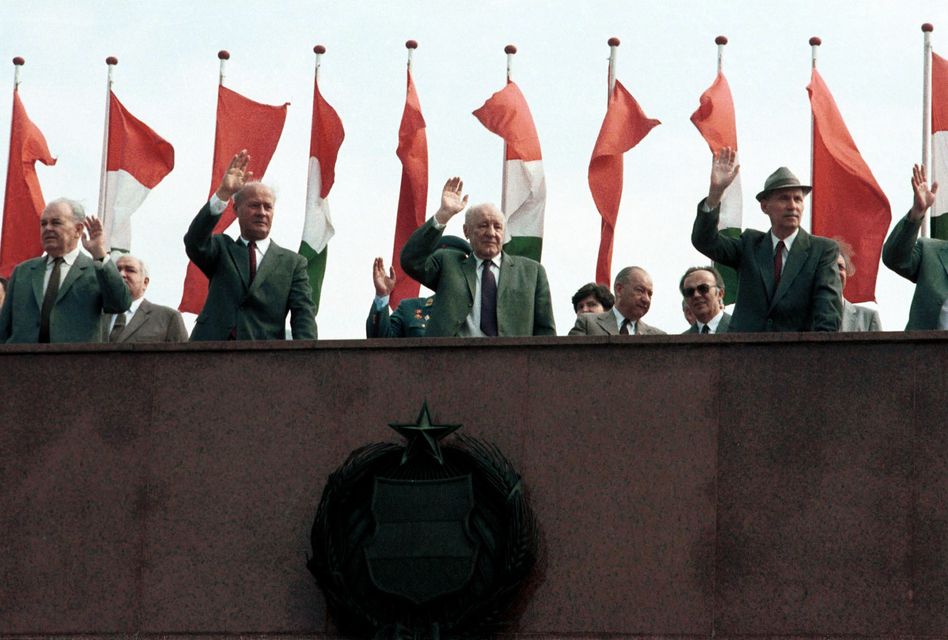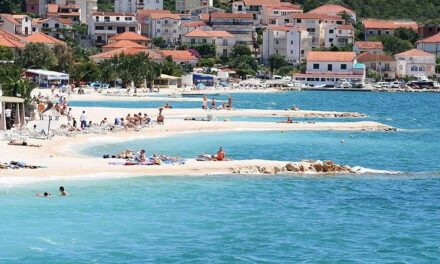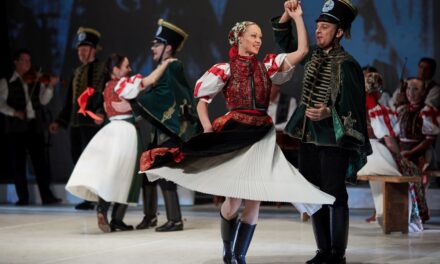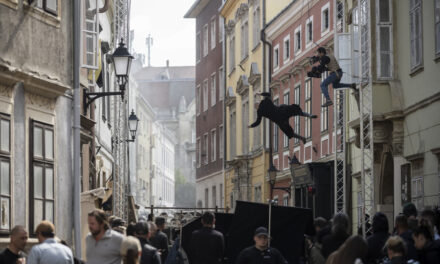The historian Zsuzsanna Borvendég's series was originally published on the PestiSrácok website, but there are certainly those who missed it. But those who haven't read all the parts should also read it again. Knowing the whole picture, can we understand how we got here?
The German-Hungarian foreign relations had quite amazing threads. The ex-Nazi key figure, Emil Hoffmann , created a newspaper that was supported by the Hungarian communists, in return the Hoffmanns washed the dictatorship. But not only there, in politics as well. What is really interesting is the story in which János Kádár and his wife met a German journalist near Leányfalu. The whole thing was organized by state security and the end result was a propaganda article in which the hero of the people, the beloved János Kádár, was celebrated in German.
In 1957, the Kádár government established relations with the West German Free Democratic Party (FDP) and the big capitalist circles behind them. The liaison was Emil Hoffmann, the former Nazi intelligence officer, who moved with amazing familiarity in the Cold War battlefield of spies. He served everyone from whom he hoped to benefit without hesitation, and in 1957 he judged that with the help of Kádár, who had gained power on the back of tanks, he could oblige the party elite of old and new Hungary, and thereby also secure his own business enterprise.
Through his media relations, Hoffmann was actively involved in washing the communist dictatorship in Kádár. The bloody suppression of the revolution and the discouraging news of reprisals made the new Hungarian government unpopular in the West, but at the same time, some West German companies did not want to sever business relations with our country. The political direction of the German Christian Democratic Party (CDU) clearly condemned the harsh showdown and the introduction of summary judgment, but the FDP made an attempt to counteract this.
Sándor Kurtán - the former "little arrow" diplomat we met in the previous section - reported to the state security that Hoffmann had offered to: " write a 15-20 page information sheet for the FDP so that the election speakers could oppose the with arguments from CDU speakers. The CDU's election speakers are extremely active in using events in Hungary to support the correctness of their force policy. The FDP and SPD [Social Democratic Party of Germany] cannot oppose this for the sake of their own foreign policy, as they do not know the actual situation here."
Hoffmann therefore offered the Hungarian government, through Kurtán, the compilation of an informational propaganda material, in which he wanted to help the FDP stand by Kádár by adopting the narrative of the repressive regime.
The two key figures meet
Hoffmann's idea was welcomed by the foreign affairs leadership in Budapest, and a rich program was put together for him so that he could gain experience of the "Hungarian reality" for himself. They organized a meeting with the influential head of department of the Ministry of Foreign Trade, János Nyerges , who was read about several times in the previous parts of the series.
Since 1945, Nyerges was a key figure in the construction of the foreign trade relations system, and at that time he had been working for intelligence for more than a decade , that is, he was also experienced in the field of diplomacy and influence; he must have been aware of how useful the ex-Nazi journalist could be for them.
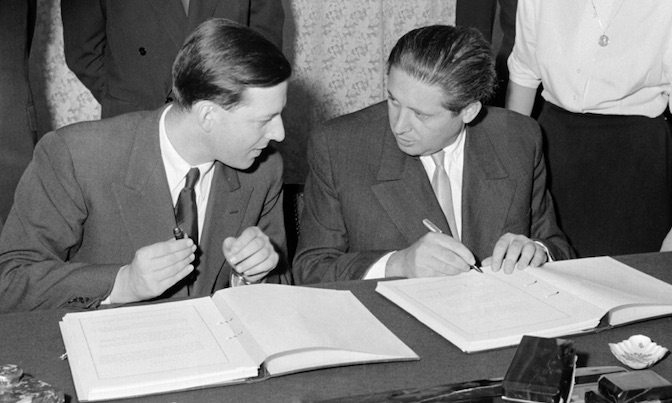
János Nyerges (right) with a western business partner (photo: MTI)
Hoffmann was looking for patrons for his new venture: since he had been fired from the Industriekurier in the meantime, he wanted to publish his own newspaper focusing on trade between East and West, but for this he needed financial support. He thought that if he did the new Hungarian government a favor, that is, wrote in several German magazines that the Kádár management had embarked on the path of consolidation, he could expect Hungarian companies to regularly place advertisements in the newspaper he edited. He calculated that he would need roughly twenty thousand West German marks a year to maintain the paper and, of course, a constant supply of fresh economic news, which the competition would not have access to.
The German paper was supported by the Kádárs, and propaganda came in return
The deal was made: the Hungarian side - through Kurtán and Nyerges - promised to support Hoffmann's business, but in return "in the information to be prepared for the parties, it starts from the following: it denies that Hungary is "connected" and that no changes have taken place compared to the situation in previous years, [confirms] that "freedom fighters" are not executed. He explains that the government is stable. The population is disillusioned with the West. Many measures and changes have taken place in economic life, which increase the standard of living."
So, in the summer of 1957, when the reprisals and executions were still in full swing, when freedom fighters were still being sentenced to death in the framework of statarian jurisprudence, Hoffmann informed the representatives of German politics and through them the German public about the rising standard of living. The news of "goulash communism" was already spreading in the wider world, when the reality did not contain even a trace of it.
Hoffmann's embeddedness in the Hungary of Kádár deepened: he became a regular visitor to various foreign trade companies, founded an economic magazine, where he promoted domestic markets and state-owned companies in the Western business world. He also took part in the organization of re-export deals: for example, Hungary supplied West German customers with coffee through a company close to Hoffmann. (The coffee was delivered to Europe from African and South American countries.)
The well-known Nazi governor of Denmark also became a business partner
Gustav Meissner , who before 1945 was known as a propagandist of Hitler's Germany and mentioned as Denmark's most dangerous Nazi deputy, regularly traveled to our country as a direct colleague of Emil Hoffmann from the beginning of the sixties Despite his war guilt, he also advanced to become a respected businessman in Germany in the 1950s, and in the early 1960s, he and Hoffmann published a joint financial and economic paper.
So Meissner himself became a frequent guest in Budapest. On December 9, 1962, he was still visiting the Hungarian capital, when the journalist assigned to accompany him - a civilian agent of the state security - offered to take him on a car trip to the Danube Bend. The action was precisely planned, and the goal was no less than to make Kádár a folktale hero.
It was a freezing cold winter's day, the peak temperature barely exceeded -10 degrees, the ice was on the Danube. At the height of Leányfalu, the built-in "tour guide" noticed that János Kádár was walking with his lovely wife on the side of the road. After drawing the attention of the German journalist to the "accidental luck", he asked if they would stop for a moment, if he would like to engage in a conversation with the first man of the country.
The journalist was of course surprised by the fact that the most powerful man in Hungary, who is the head of the government and the state party alone, without any kind of security guard, was walking freely on the street and engaging in a conversation with a passing stranger. Mrs. János Kádár - who used to fight against "reactionary" defectors in the mail inspection department of the state defense - was the embodiment of charm. With endless kindness, he persuaded the journalist to return in the spring, as the captivating Danube Bend shows its most beautiful face to tourists then.
A touching story about a jovial married couple who, incidentally, in the years preceding their meeting, carried out the cruelest showdown in the history of our country.1
The adored and admired János Kádár
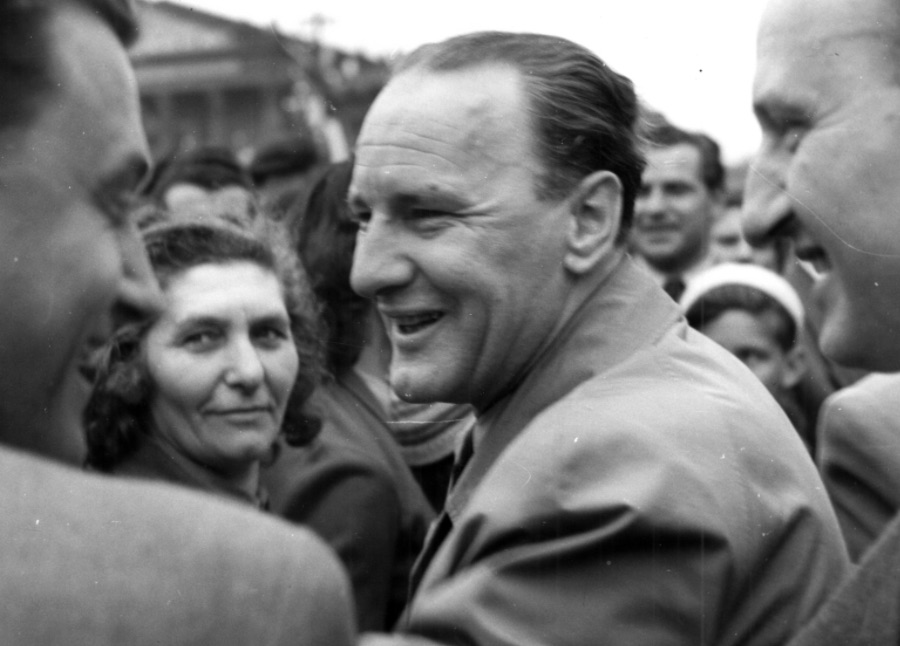
The smiling killer. Comrade Kádár mingles with the people (photo: Fortepan)
The secret service action organized with the personal participation of Kádár to influence (lead) Western public opinion ended successfully: within days, the first episode of a three-part series of articles appeared in the West German press, entitled Meeting with Kádár. The bloody murderer of the revolution appeared before the Western public like King Matthias from the folktale:
"We were in Budapest last week. We will report on this in several sequels. Today we start with our political impressions. It's Sunday. The damp cold steam bell above Budapest has finally disappeared. Under a clear, frosty sky, the city became more colorful. The thermometer dropped to minus ten degrees. The Danube is taking place. We are on our way to Visegrád. Visegrád is a very popular bathing place in the summer, which also has a historical attraction, the ruins of the Tower of Solomon and the Renaissance palace of King Matthias Corvin are located here. It is said that red and white Hungarian wines once flowed from the famous castle fountain like a cascading waterfall during celebrations.
We meet János Kádár roughly halfway. He wears a sporty light brown deerskin coat. Mrs. Kádár, who accompanies him on his morning walk, also dressed appropriately and simply for the winter trip. My Hungarian acquaintance, the editor and department head of one of the specialized ministries, stopped his Skoda to greet the party leader and prime minister, i.e. the most powerful man in Hungary. Kádár learns from him that I am a visitor from Bonn. He will gladly shake my hand.
Mrs. Kádár expresses her regret that I chose the winter as the date of my trip, and says that I absolutely must come to Budapest again in May, when the banks of the Danube take on a joyful splendor. We are not talking about politics. But talking about Hungary is politics in itself. Because Kádár is primarily a Hungarian, and only then a politician and ideologue. They both say goodbye to me in German and continue their walk. They are all alone. A black Mercedes - Kádár's service car follows them at a distance of roughly five hundred meters.
Police protection is nowhere to be seen. Kádár doesn't need that, says my companion. The latter, a non-partisan, fought on the side of the Germans as an army officer, was wounded nine times and was finally held captive by Russia for three years. What binds him to Kádár is being Hungarian."
The article continues at length (in German, of course), presenting Hungary as a kind of Canaan flowing with milk and honey, where the standard of living approaches that of West Germany. in 1962. Half a year before the issuance of the amnesty decree. During the brutal administration of forced collectivization. But such writings pleased the West, soothed its conscience...
Source: PestiSrácok
Author: historian Zsuzsanna Borvendég
(Header image: Fortepan)

